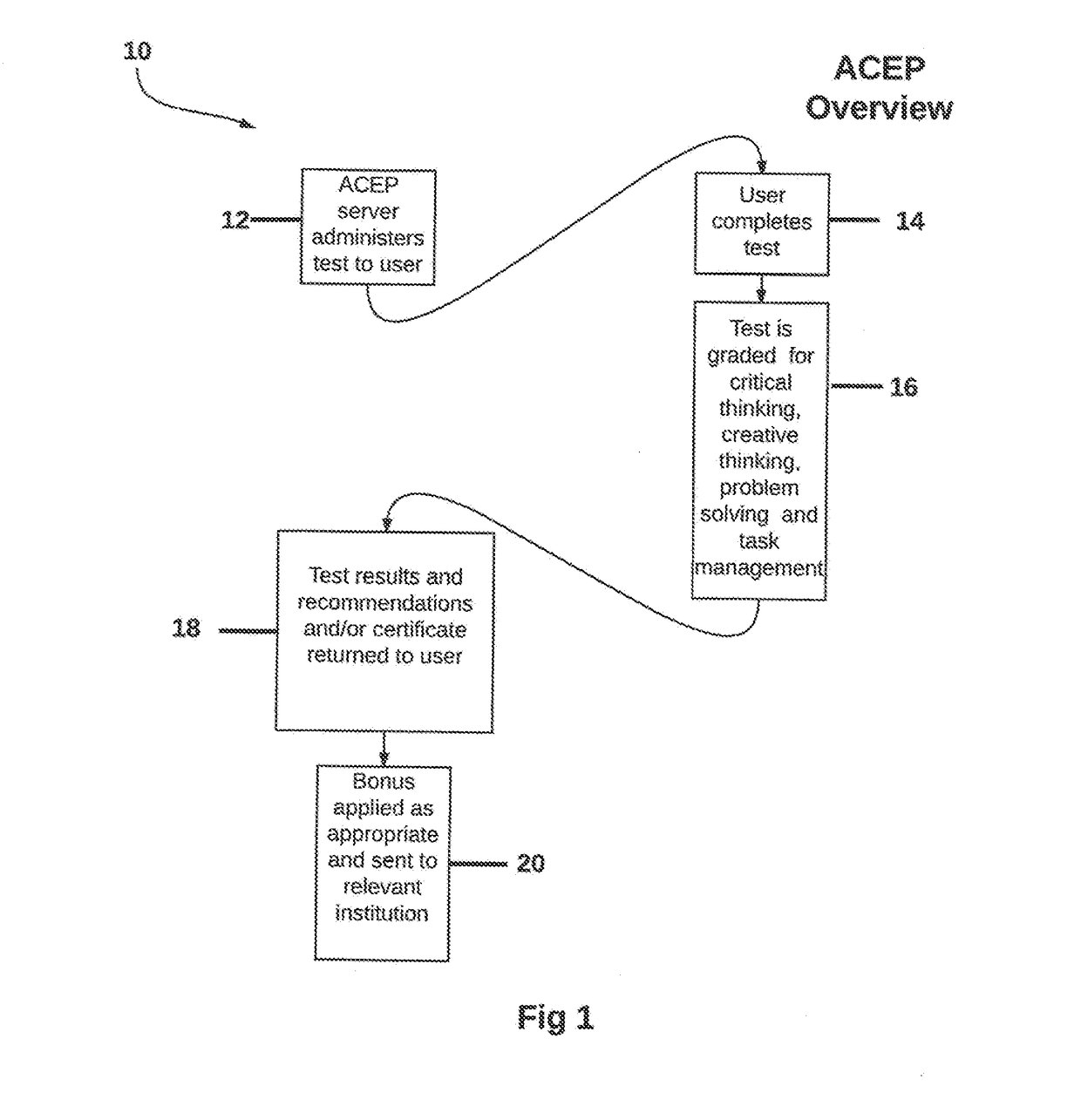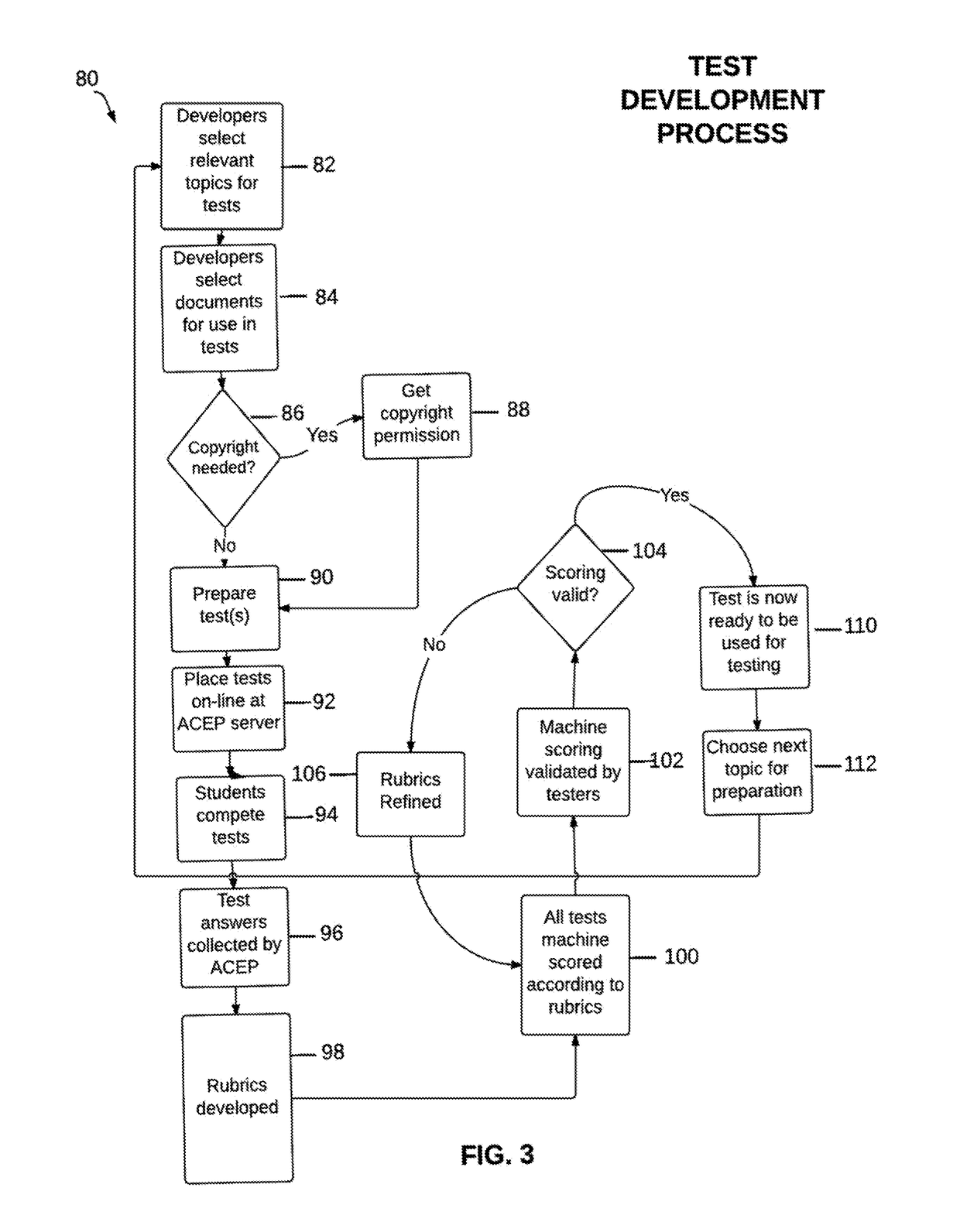Assessment of core educational proficiencies
a core educational proficiency and core educational technology, applied in the field of system and method for assessing core educational proficiencies, can solve the problems of unclear skills students gain, school closure, and lack of concrete answers, and achieve the effect of effectively handling existing validity, reliability, empowerment problems, and improving core educational proficiencies
- Summary
- Abstract
- Description
- Claims
- Application Information
AI Technical Summary
Benefits of technology
Problems solved by technology
Method used
Image
Examples
Embodiment Construction
[0131]For a fuller understanding of the nature and objects of the invention, reference should be had to the following detailed description taken in conjunction with the accompanying drawings wherein similar parts of the invention are identified by like reference numerals. There is seen in FIG. 1 an illustration of the overall processes of the ACEP testing system 10. The ACEP server 12 holds tests which have been validated as shown and described below in FIG. 3, ACEP electronically distributes tests to users 14 who complete the tests and submit them for grading, communications being received and sent as shown and described below in FIG. 6. Each test is made up of two parts to be taken one to two days apart. Tests are graded electronically by proprietary software and by third-party vendors 16. The latter grades for certain criteria including but not limited to critical thinking, creative thinking, problem solving, effective writing and task management. The third party vendors send res...
PUM
 Login to View More
Login to View More Abstract
Description
Claims
Application Information
 Login to View More
Login to View More - R&D
- Intellectual Property
- Life Sciences
- Materials
- Tech Scout
- Unparalleled Data Quality
- Higher Quality Content
- 60% Fewer Hallucinations
Browse by: Latest US Patents, China's latest patents, Technical Efficacy Thesaurus, Application Domain, Technology Topic, Popular Technical Reports.
© 2025 PatSnap. All rights reserved.Legal|Privacy policy|Modern Slavery Act Transparency Statement|Sitemap|About US| Contact US: help@patsnap.com



